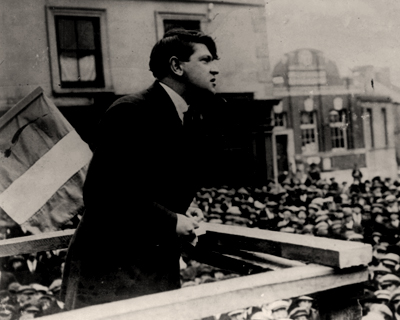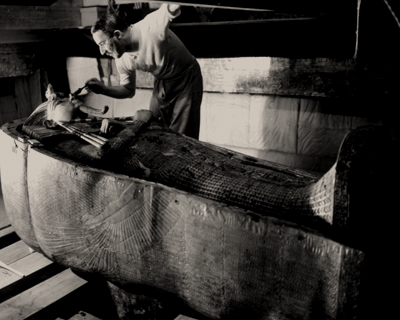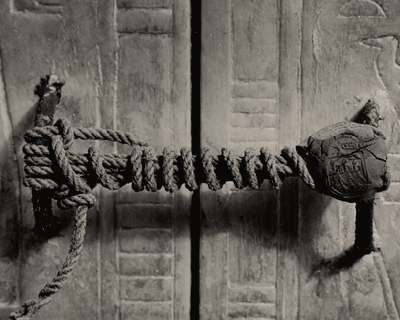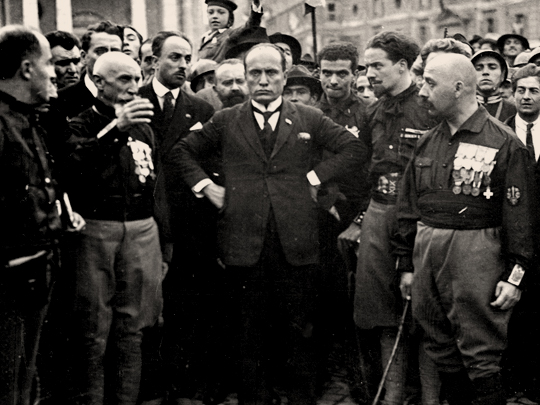Wikimedia Commons / CC-BY-SA-3.0 / GFDL
1 – Mussolini Marches on Rome & Forms Fascist Government
The March on Rome was a march by which Italian dictator Benito Mussolini’s National Fascist Party (or PNF) came to power in the Kingdom of Italy. The march took place from 22 to 29 October 1922.
Mussolini himself joined the march at various stages to have his photograph taken and be seen as marching shoulder-to-shoulder with his men. He only wanted to do so much marching, however, and he arrived in the capital by express train.
The march itself was composed of fewer than 30,000 men, but the king in part feared a civil war since the ‘squadristi’ had already taken control of the Po River plain and most of the country. Fascism was also no longer seen as a threat to the establishment.
Mussolini was asked to form his cabinet on 29 October 1922, while some 25,000 Blackshirts were parading in Rome. Mussolini thus legally reached power, in accordance with the Italian Constitution.
The March on Rome was not the conquest of power which Fascism later celebrated but rather the precipitating force behind a transfer of power within the framework of the constitution.
This transition was made possible by the surrender of public authorities in the face of fascist intimidation. Many business and financial leaders believed it would be possible to manipulate Mussolini, this proved to be overly optimistic.
Just five years earlier, Mussolini had been a corporal in the Italian Army fighting in World War One.
2 – Revolutionary Irish Politician Michael Collins was Killed in an Ambush

Michael Collins was a soldier and politician who was a leading figure in the struggle for Irish independence in the early 20th century.
Collins was a representative for Cork South in the First Dáil of 1919 and a member of the Irish delegation during the Anglo-Irish Treaty negotiations. Collins was shot and killed in an ambush during the Irish Civil War.
On 22 August 1922, as the war seemed to be petering out, Collins went on a circuitous tour of his home territory in West Cork. This passed by Béal na Bláth, an isolated crossroads, where they stopped to query a man standing at the crossroad.
The man turned out to be an anti-Treaty sentry. Collins was recognized in the back of the open-top car and an ambush was laid by an anti-Treaty column, on the chance that the convoy might pass on their return journey.
Between 7:30 and 8 pm, Collins’ convoy approached Béal na Bláth for the second time. By then most of the ambush party had dispersed, leaving just five or six men on the scene. A cart, placed across the road, remained at the far end of the ambush site.
Shots were exchanged. Collins, who suffered a head wound, was the only fatality. Almost every other detail of what happened is uncertain, due to conflicting reports from participants and other flaws in the record.
It is reported that some 500,000 people attended his funeral, almost one-fifth of the country’s population at that time.
No official inquiry was ever undertaken into Collins’s death and consequently, there is no official version of what happened.
3 – King Tutankh mun’s Tomb in the Valley of the Kings, Unearthed by Egyptologist Howard Carter

Carter with King Tut’s Tomb. Harry Burton / Wikimedia Commons / CC-BY-SA-3.0 / GFDL
Tutankhamun was an Egyptian pharaoh of the 18th dynasty, ruling from circa 1332 BC to 1323 BC, during the period of Egyptian history known as the New Kingdom.
Howard Carter and his sponsor, Lord George Carnarvon, spent a number of years and a lot of money searching for a tomb in Egypt’s Valley of the Kings that they weren’t sure still existed.
On November 4, 1922, they discovered a step leading to the tomb.
The tomb’s condition and an array of treasure can be credited to it being built over for workmen’s huts at the base of the tomb of Rameses VI. The discovery of Tutankhamun’s nearly intact tomb received worldwide press coverage.
It resulted in a renewed public interest in ancient Egypt, for which Tutankhamun’s mask remains the popular symbol. Exhibits of artifacts from his tomb have toured the world.

5,398 items were found in the tomb, including a solid gold coffin, face mask, thrones, archery bows, and a lotus chalice. Howard Carter took 10 years to catalog the items.
Recent analysis suggests a dagger recovered from the tomb had an iron blade made from a meteorite. Tutankhamun’s mummy still rests in his tomb in the Valley of the Kings.
On 4 November 2007, 85 years to the day after Carter’s discovery, the 19-year-old pharaoh went on display in his underground tomb at Luxor, when the linen-wrapped mummy was removed from its golden sarcophagus to a climate-controlled glass box.
4 – James Joyce’s Ulysses Published

Ulysses is a modernist novel by renowned Irish writer James Joyce.
It was first serialized in parts in the American journal The Little Review from March 1918 to December 1920.
Ulysses was then published in its entirety by Sylvia Beach on 2 February 1922, in Paris.
Ulysses is considered to be one of the most important works of modernist literature.
